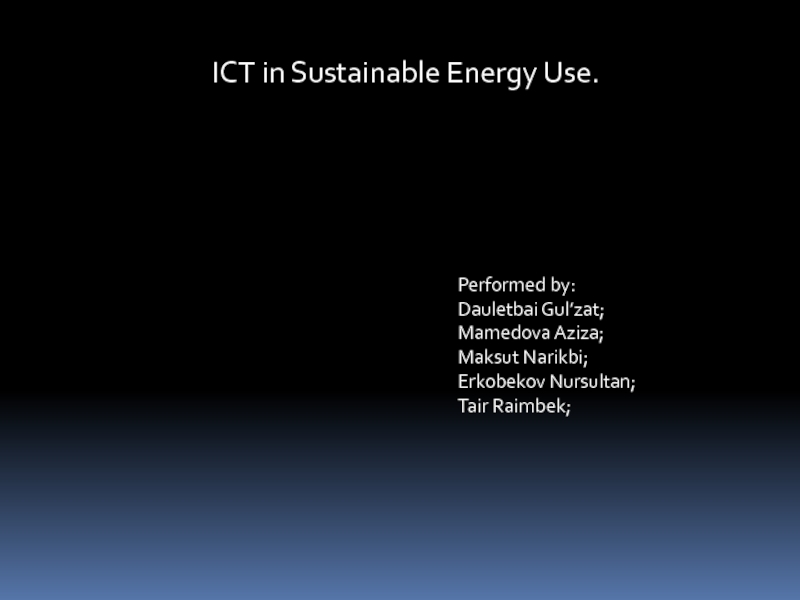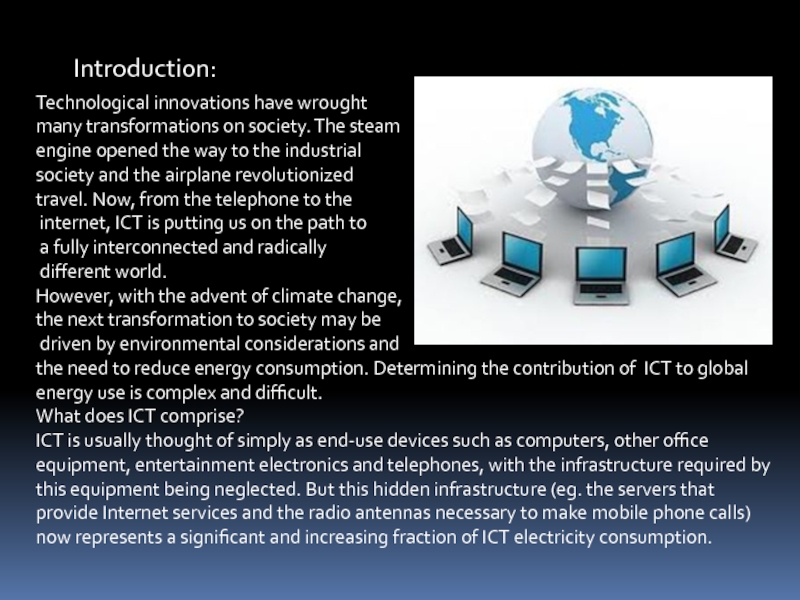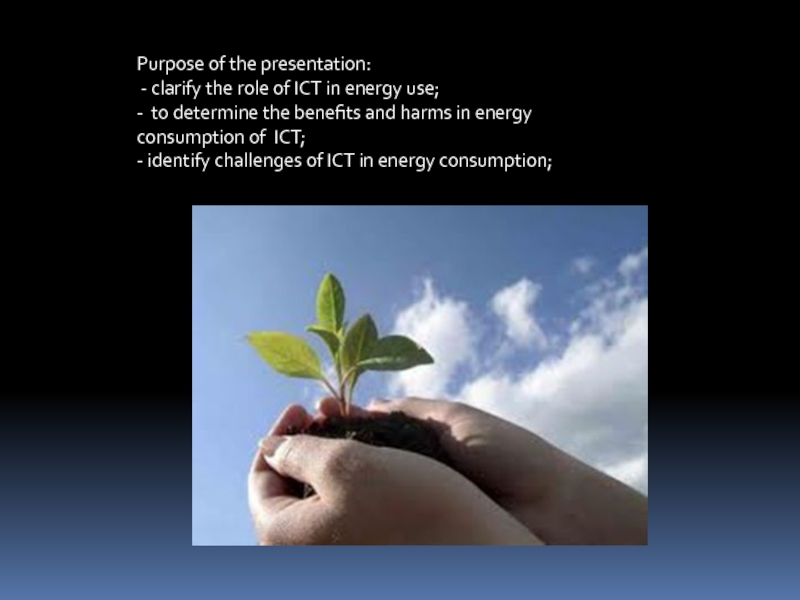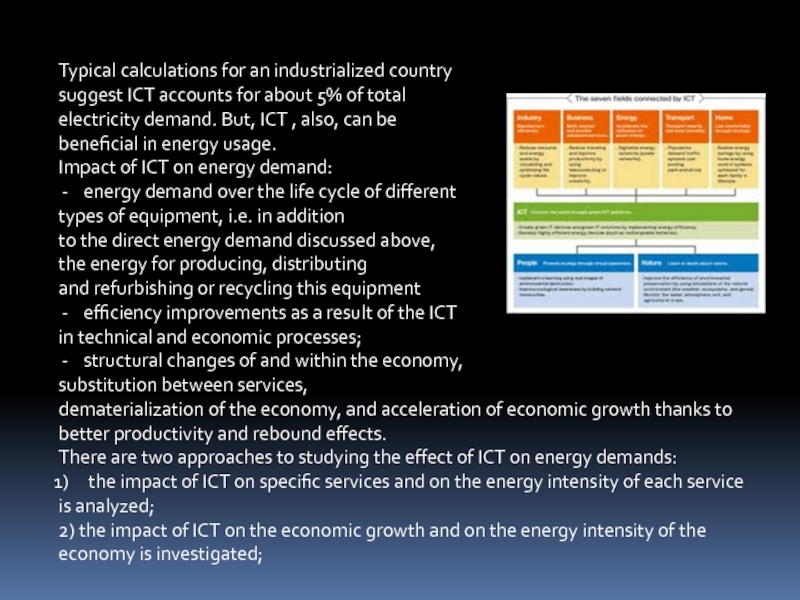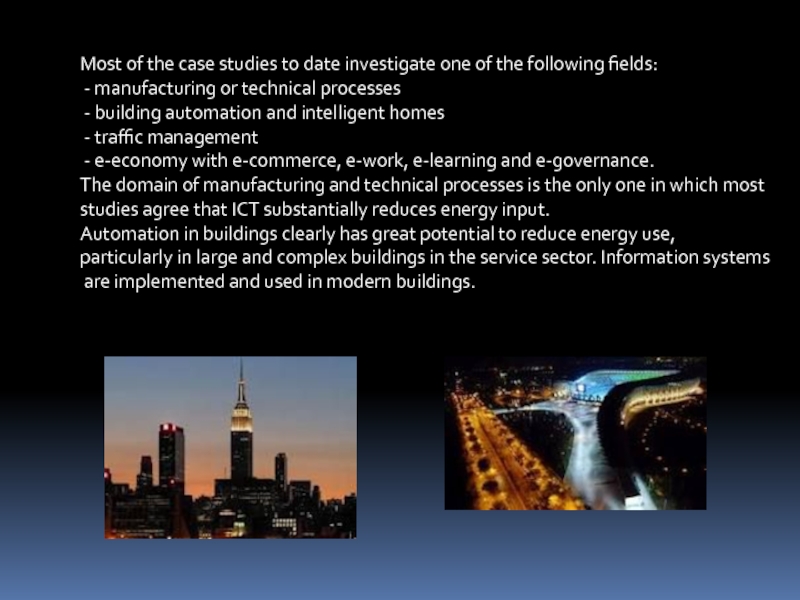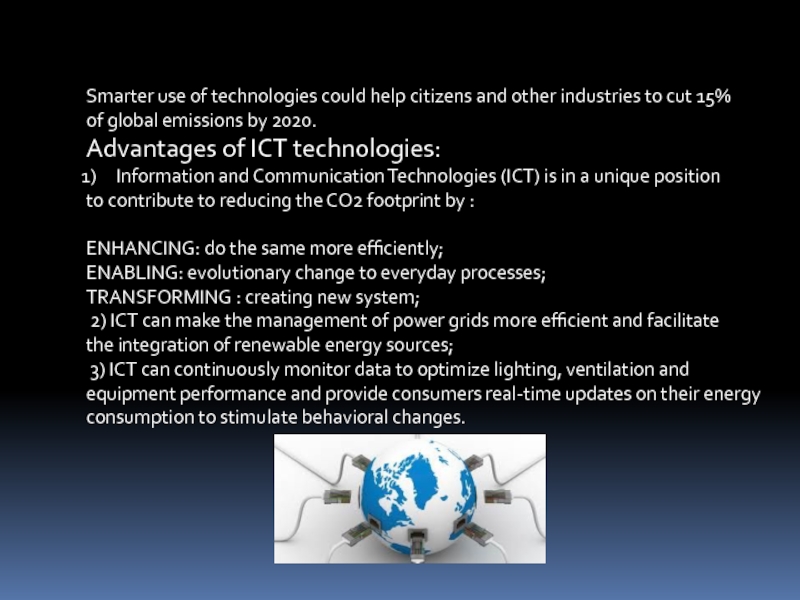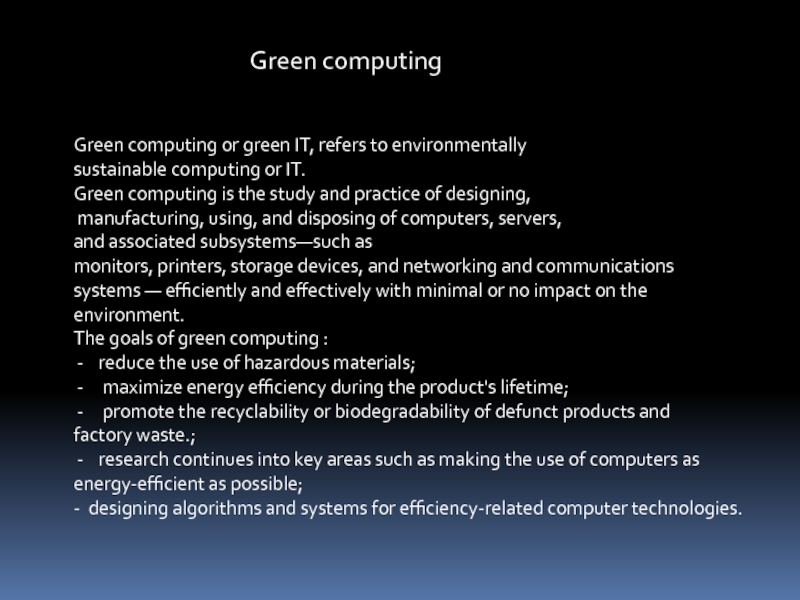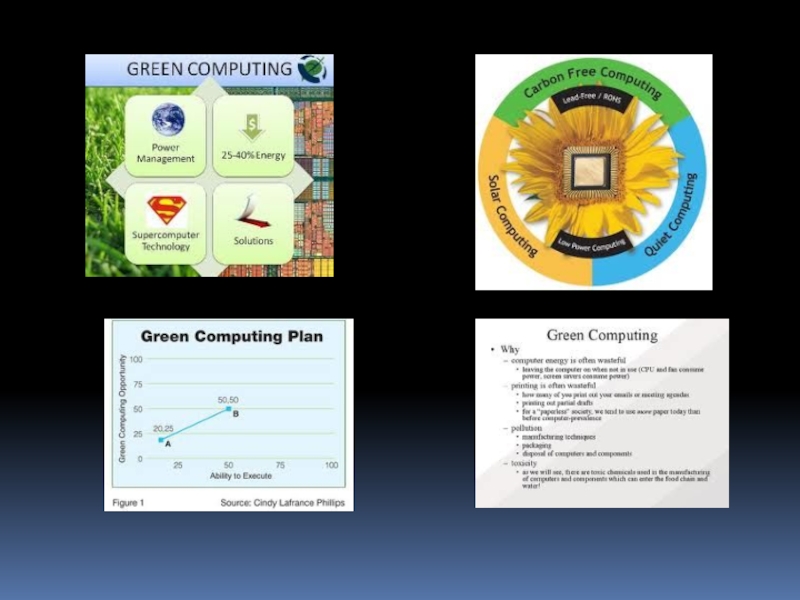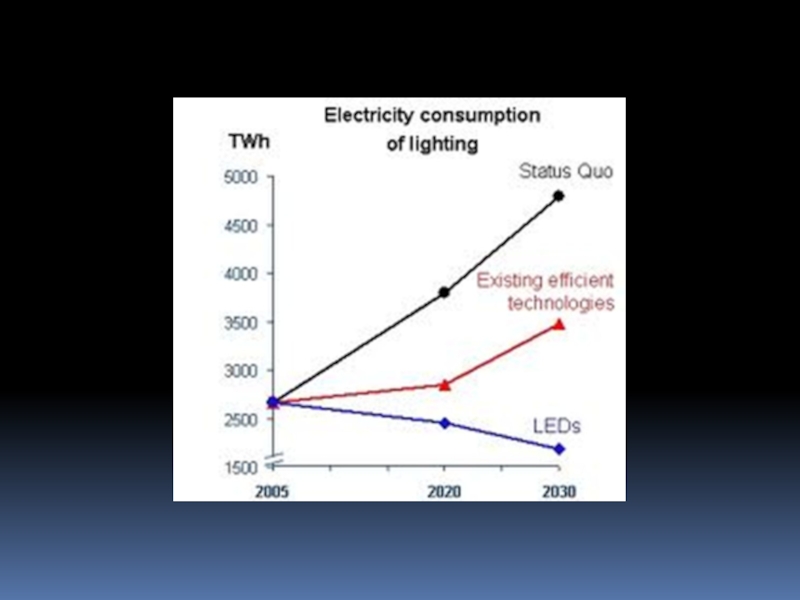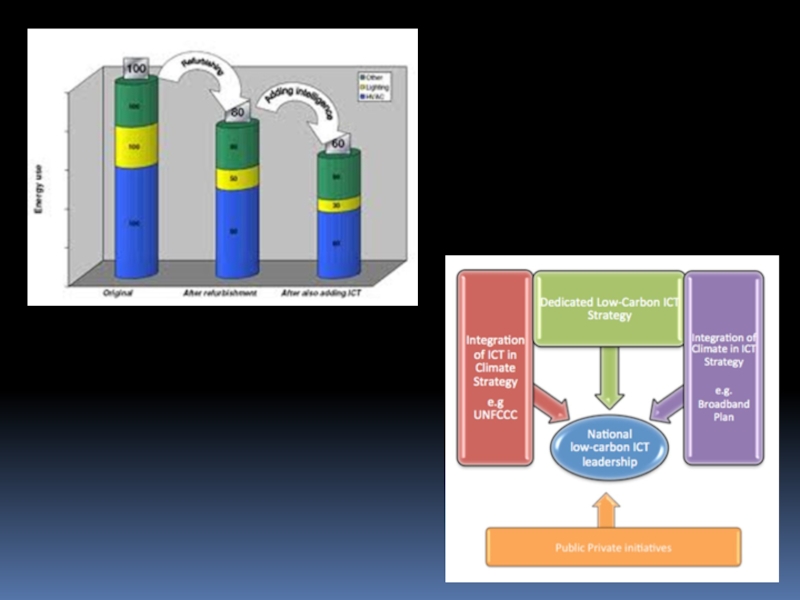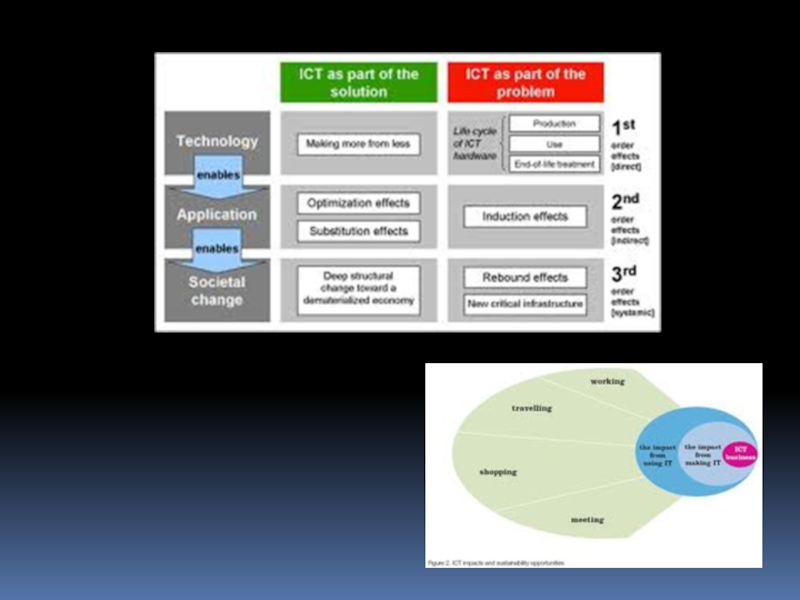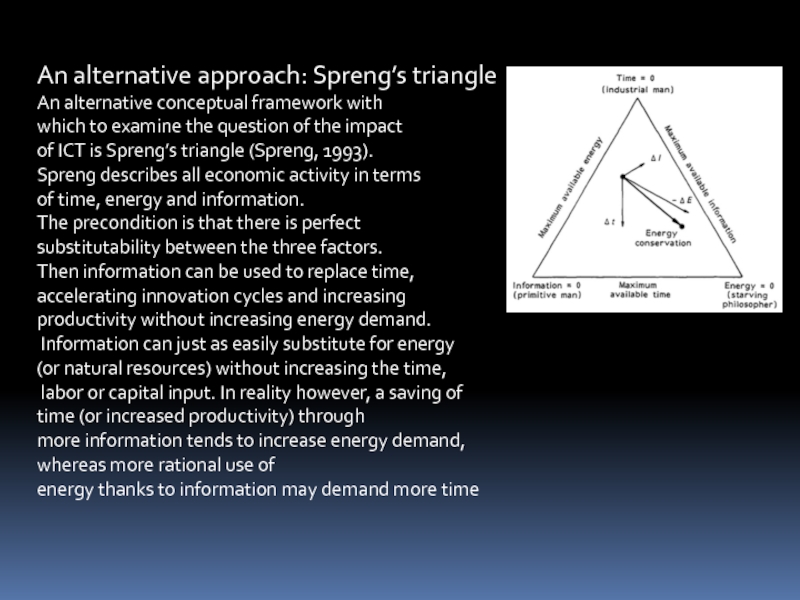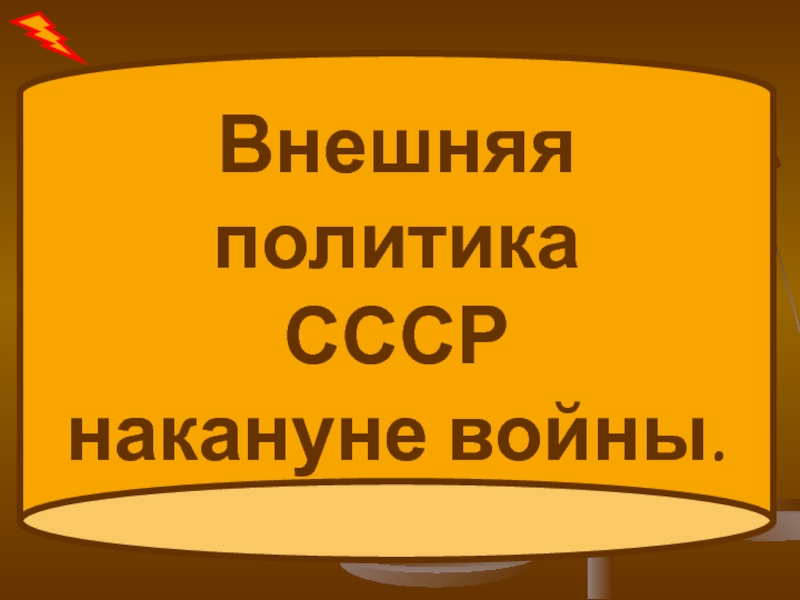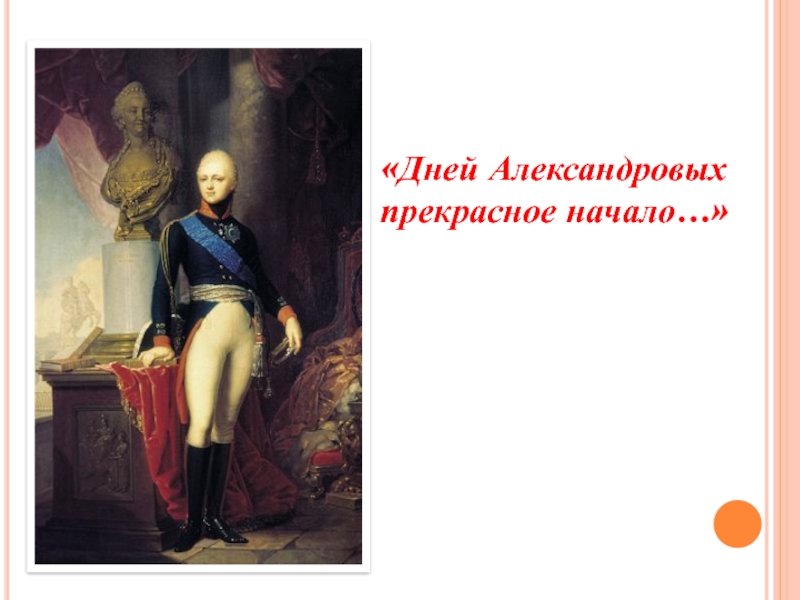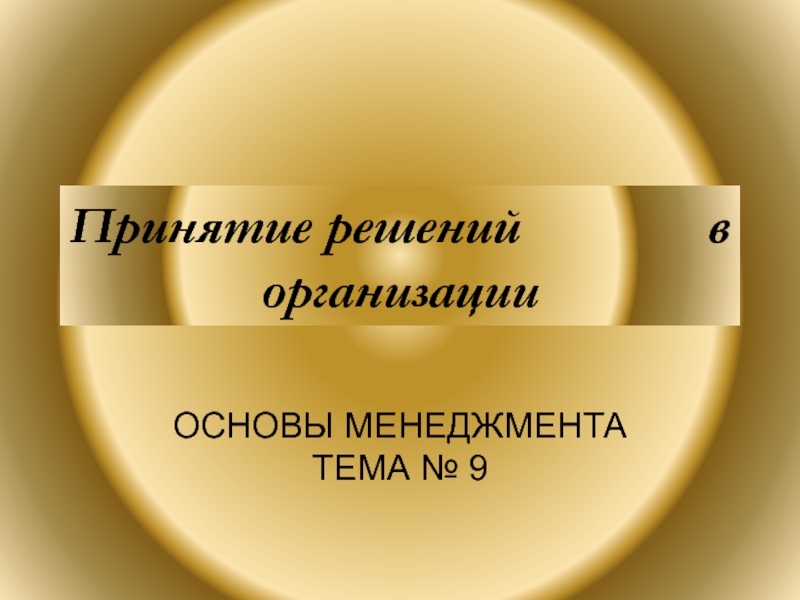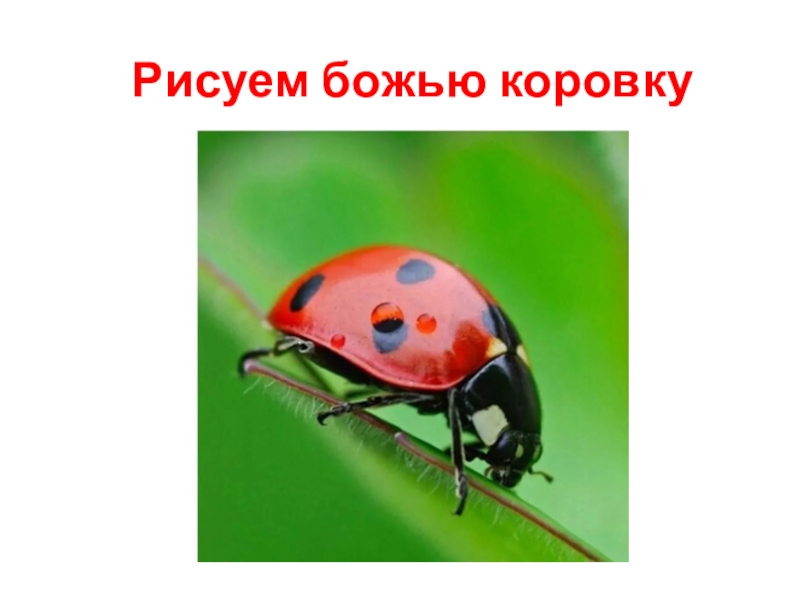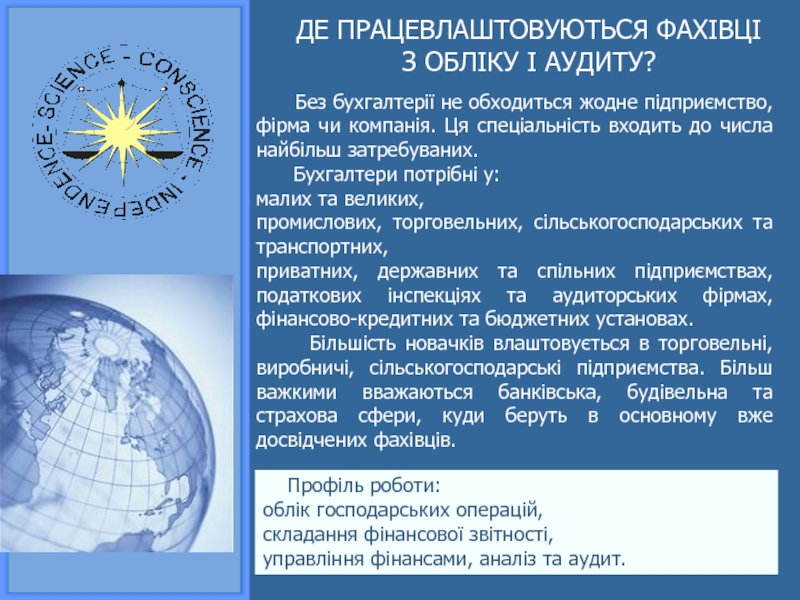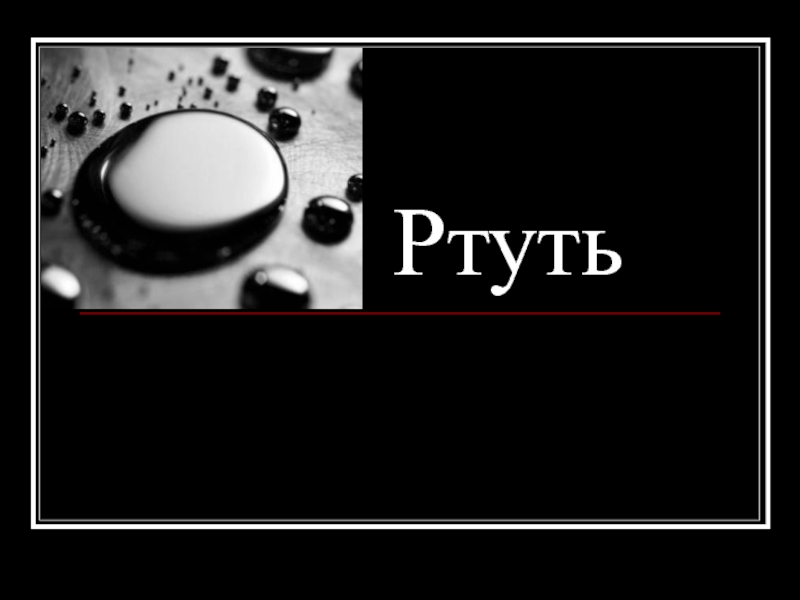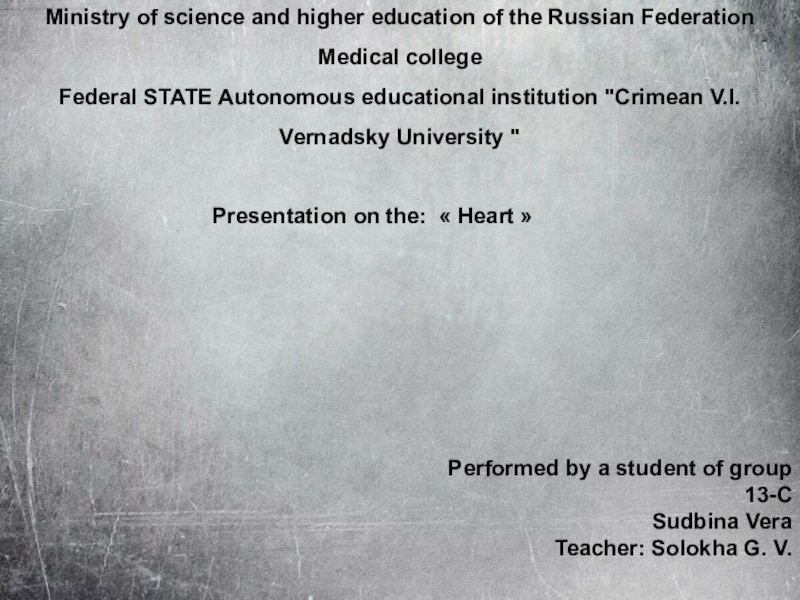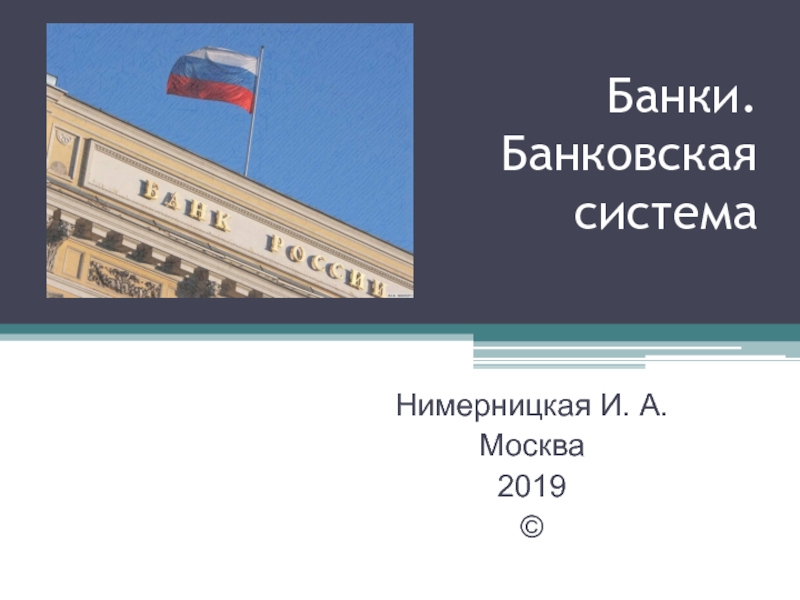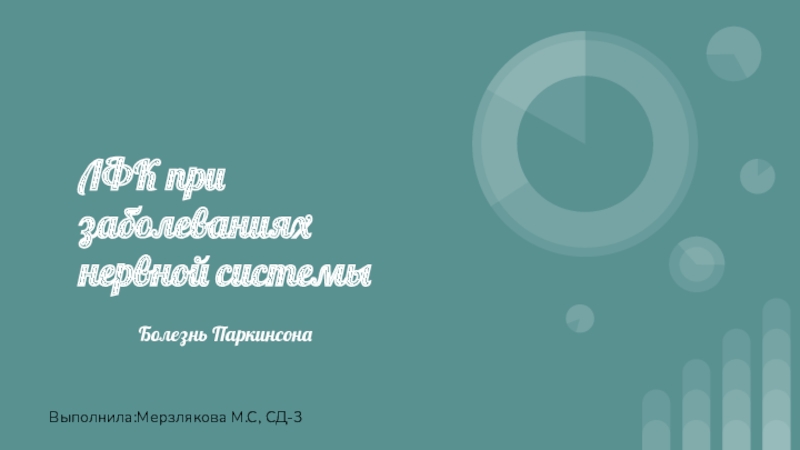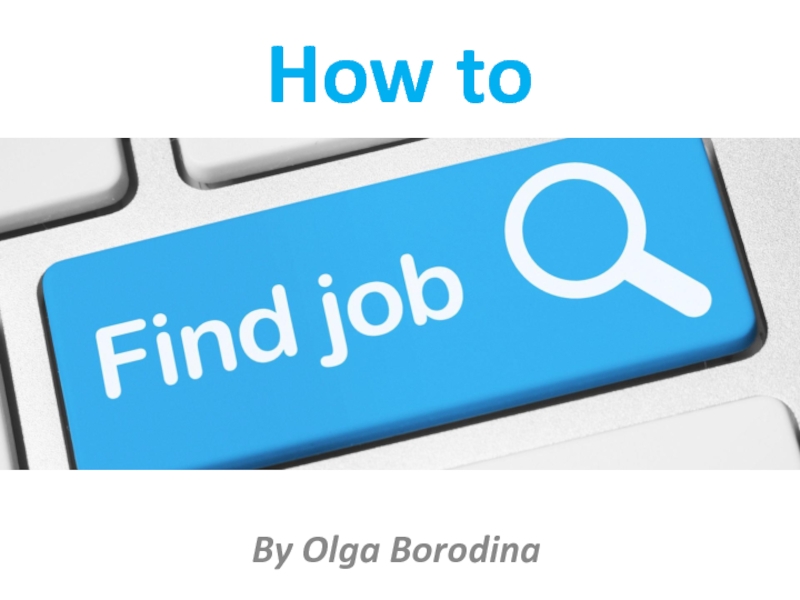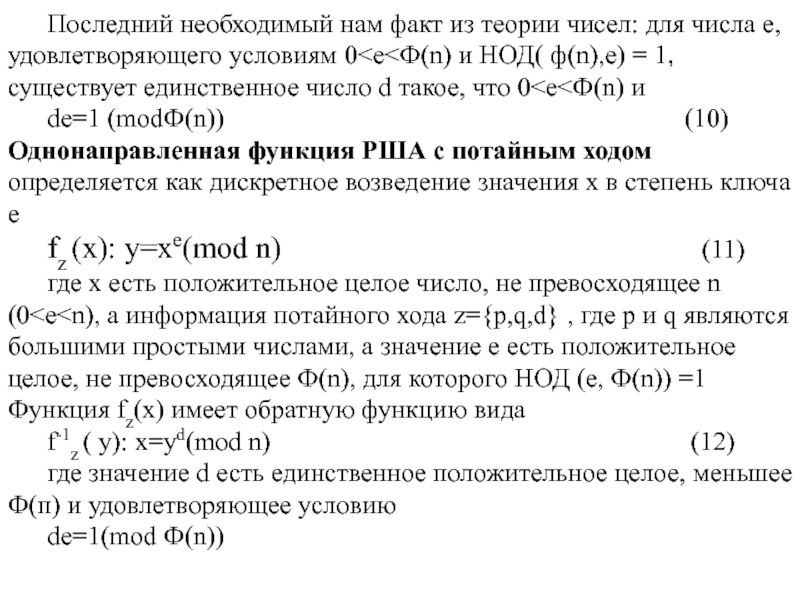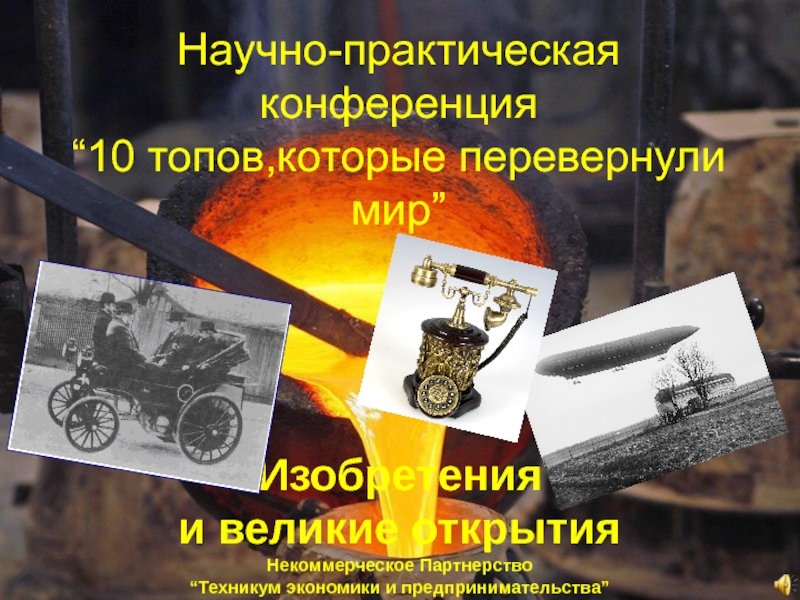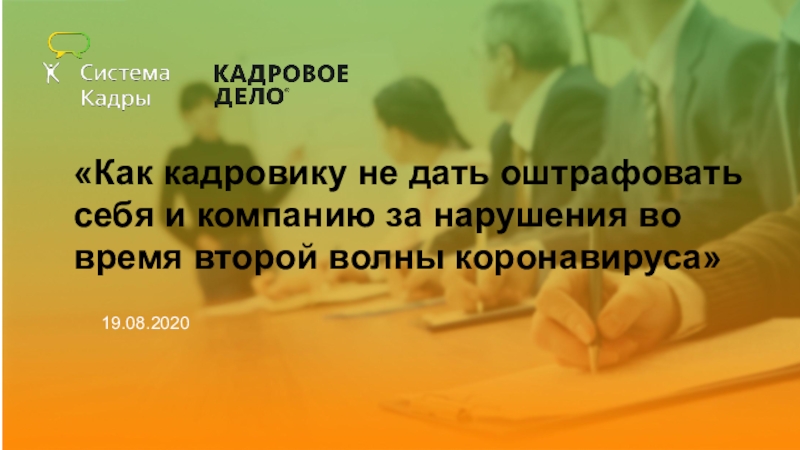Разделы презентаций
- Разное
- Английский язык
- Астрономия
- Алгебра
- Биология
- География
- Геометрия
- Детские презентации
- Информатика
- История
- Литература
- Математика
- Медицина
- Менеджмент
- Музыка
- МХК
- Немецкий язык
- ОБЖ
- Обществознание
- Окружающий мир
- Педагогика
- Русский язык
- Технология
- Физика
- Философия
- Химия
- Шаблоны, картинки для презентаций
- Экология
- Экономика
- Юриспруденция
ICT in Sustainable Energy Use. Performed by: Dauletbai Gul’zat ; Mamedova
Содержание
- 1. ICT in Sustainable Energy Use. Performed by: Dauletbai Gul’zat ; Mamedova
- 2. Introduction:Technological innovations have wrought many transformations on
- 3. Purpose of the presentation: - clarify the
- 4. Typical calculations for an industrialized country suggest
- 5. Most of the case studies to date
- 6. Smarter use of technologies could help citizens
- 7. Green computingGreen computing or green IT, refers
- 8. Слайд 8
- 9. Слайд 9
- 10. Слайд 10
- 11. Слайд 11
- 12. An alternative approach: Spreng’s triangleAn alternative conceptual
- 13. Conclusion:
- 14. Слайд 14
- 15. Слайд 15
- 16. Скачать презентанцию
Introduction:Technological innovations have wrought many transformations on society. The steam engine opened the way to the industrial society and the airplane revolutionized travel. Now, from the telephone to the internet, ICT
Слайды и текст этой презентации
Слайд 1ICT in Sustainable Energy Use.
Performed by:
Dauletbai Gul’zat;
Mamedova Aziza;
Maksut Narikbi;
Erkobekov Nursultan;
Tair
Raimbek;
Слайд 2Introduction:
Technological innovations have wrought
many transformations on society. The steam
engine opened the way to the industrial
society and the
airplane revolutionized travel. Now, from the telephone to the
internet, ICT is putting us on the path to
a fully interconnected and radically
different world.
However, with the advent of climate change,
the next transformation to society may be
driven by environmental considerations and
the need to reduce energy consumption. Determining the contribution of ICT to global
energy use is complex and difficult.
What does ICT comprise?
ICT is usually thought of simply as end-use devices such as computers, other office equipment, entertainment electronics and telephones, with the infrastructure required by this equipment being neglected. But this hidden infrastructure (eg. the servers that provide Internet services and the radio antennas necessary to make mobile phone calls) now represents a significant and increasing fraction of ICT electricity consumption.
Слайд 3Purpose of the presentation:
- clarify the role of ICT
in energy use;
- to determine the benefits and harms in
energy consumption of ICT;
- identify challenges of ICT in energy consumption;
Слайд 4Typical calculations for an industrialized country
suggest ICT accounts for
about 5% of total
electricity demand. But, ICT , also,
can be beneficial in energy usage.
Impact of ICT on energy demand:
energy demand over the life cycle of different
types of equipment, i.e. in addition
to the direct energy demand discussed above,
the energy for producing, distributing
and refurbishing or recycling this equipment
efficiency improvements as a result of the ICT
in technical and economic processes;
structural changes of and within the economy,
substitution between services,
dematerialization of the economy, and acceleration of economic growth thanks to
better productivity and rebound effects.
There are two approaches to studying the effect of ICT on energy demands:
the impact of ICT on specific services and on the energy intensity of each service
is analyzed;
2) the impact of ICT on the economic growth and on the energy intensity of the
economy is investigated;
Слайд 5Most of the case studies to date investigate one of
the following fields:
- manufacturing or technical processes
- building
automation and intelligent homes- traffic management
- e-economy with e-commerce, e-work, e-learning and e-governance.
The domain of manufacturing and technical processes is the only one in which most
studies agree that ICT substantially reduces energy input.
Automation in buildings clearly has great potential to reduce energy use,
particularly in large and complex buildings in the service sector. Information systems
are implemented and used in modern buildings.
Слайд 6Smarter use of technologies could help citizens and other industries
to cut 15%
of global emissions by 2020.
Advantages of ICT
technologies:Information and Communication Technologies (ICT) is in a unique position
to contribute to reducing the CO2 footprint by :
ENHANCING: do the same more efficiently;
ENABLING: evolutionary change to everyday processes;
TRANSFORMING : creating new system;
2) ICT can make the management of power grids more efficient and facilitate
the integration of renewable energy sources;
3) ICT can continuously monitor data to optimize lighting, ventilation and
equipment performance and provide consumers real-time updates on their energy
consumption to stimulate behavioral changes.
Слайд 7Green computing
Green computing or green IT, refers to environmentally
sustainable
computing or IT.
Green computing is the study and practice of
designing,manufacturing, using, and disposing of computers, servers,
and associated subsystems—such as
monitors, printers, storage devices, and networking and communications
systems — efficiently and effectively with minimal or no impact on the
environment.
The goals of green computing :
reduce the use of hazardous materials;
maximize energy efficiency during the product's lifetime;
promote the recyclability or biodegradability of defunct products and
factory waste.;
research continues into key areas such as making the use of computers as
energy-efficient as possible;
- designing algorithms and systems for efficiency-related computer technologies.
Слайд 12An alternative approach: Spreng’s triangle
An alternative conceptual framework with
which
to examine the question of the impact
of ICT is
Spreng’s triangle (Spreng, 1993). Spreng describes all economic activity in terms
of time, energy and information.
The precondition is that there is perfect
substitutability between the three factors.
Then information can be used to replace time,
accelerating innovation cycles and increasing
productivity without increasing energy demand.
Information can just as easily substitute for energy
(or natural resources) without increasing the time,
labor or capital input. In reality however, a saving of
time (or increased productivity) through
more information tends to increase energy demand,
whereas more rational use of
energy thanks to information may demand more time
